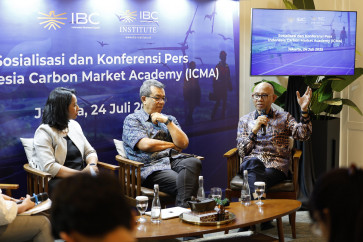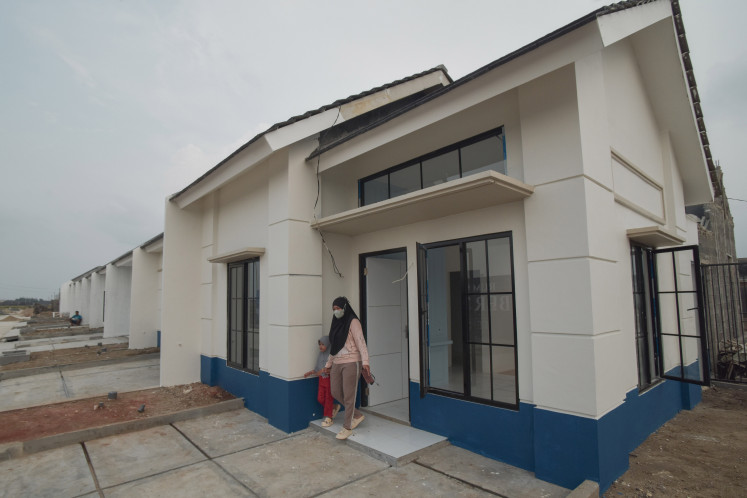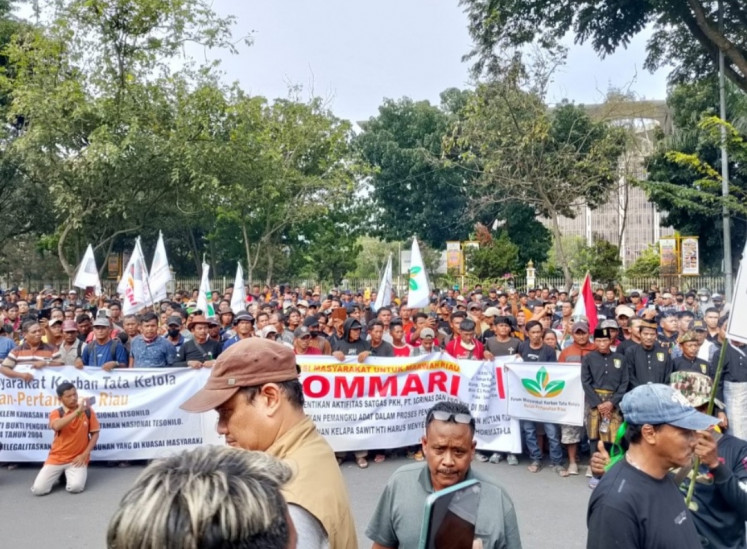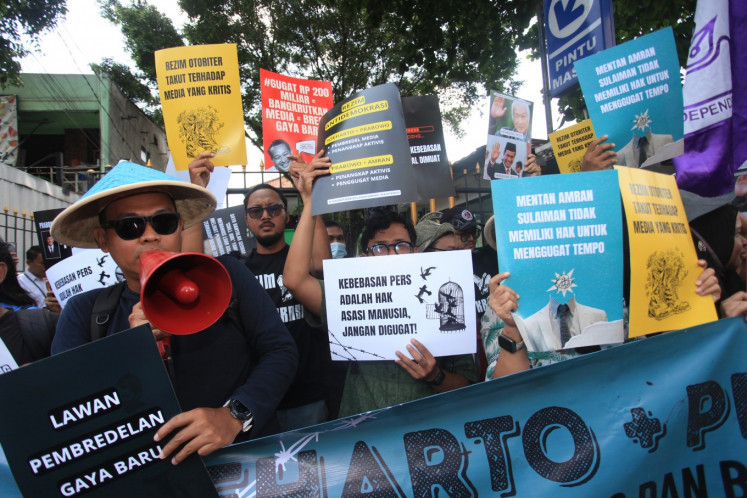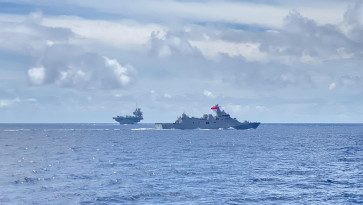Popular Reads
Top Results
Can't find what you're looking for?
View all search resultsPopular Reads
Top Results
Can't find what you're looking for?
View all search resultsAircraft carrier to boost Indonesia’s blue water Navy doctrine
The Indonesian Navy has limited experience in long-range task force or flotilla operations beyond the EEZ, the hallmark of a blue water navy.
Change text size
Gift Premium Articles
to Anyone
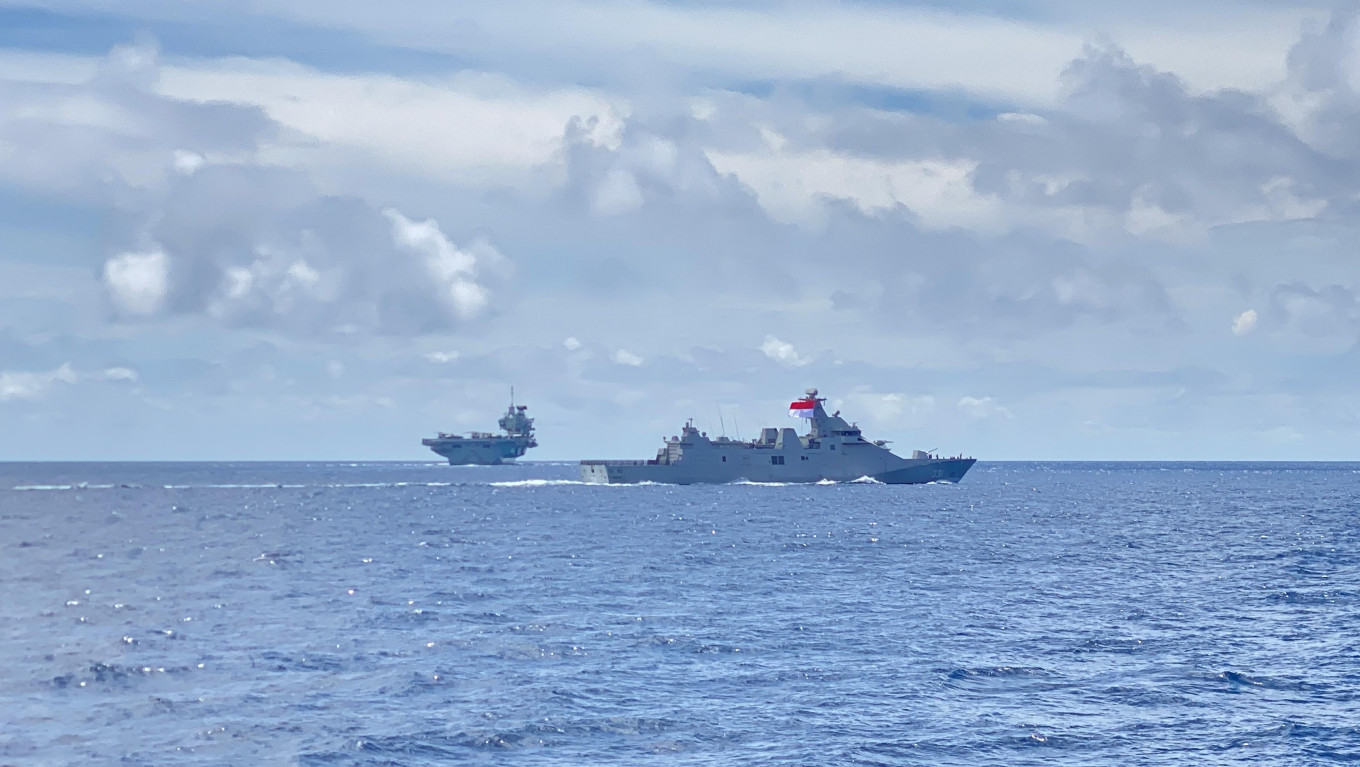 The Indonesian Navy's KRI Raden Eddy Martadinata 331 (foreground) passes the United Kingdom Royal Navy's aircraft carrier HMS Prince of Wales during a passing exercise on July 31 along the Indonesian Sea Lane of Communications (ALKI) III in the Banda Sea, southwest of Buru Island. (Courtesy of Indonesian Navy/-)
The Indonesian Navy's KRI Raden Eddy Martadinata 331 (foreground) passes the United Kingdom Royal Navy's aircraft carrier HMS Prince of Wales during a passing exercise on July 31 along the Indonesian Sea Lane of Communications (ALKI) III in the Banda Sea, southwest of Buru Island. (Courtesy of Indonesian Navy/-)
I
ndonesia is reportedly preparing to purchase a light aircraft carrier, the ITS Giuseppe Garibaldi, from the Italian Navy. The purchase of the vessel, which serves as a Landing Platform Helicopter (LPH), represents good news for Indonesia. As the world’s largest archipelagic state, it is only fitting for the Indonesian Navy to possess at least one aircraft carrier.
For any navy, owning an aircraft carrier is a long-held aspiration. As a mothership or high-value unit (HVU), it carries significant deterrence power. Only about 10 countries in the world currently operate aircraft carriers, making them symbols of maritime prestige and power projection. In Southeast Asia, Thailand is the only nation with such a vessel, though categorized as a light carrier.
An aircraft carrier, however, is not solely designed as a main weapon system for military operations in war. In peacetime, it serves critical non-combat purposes (Military Operations Other Than War/MOOTW) such as humanitarian missions, particularly disaster relief operations. For Indonesia, a nation located along the seismically volatile Pacific “Ring of Fire”, the utility of an aircraft carrier extends far beyond warfare. The country’s susceptibility to earthquakes, volcanic eruptions and tsunamis makes such a platform strategically vital.
The value of an aircraft carrier in humanitarian operations was evident during the devastating 2004 tsunami in Aceh. At that time, the United States Navy’s USS Abraham Lincoln was sailing in the South China Sea. Soon after Indonesia requested international assistance, the carrier arrived off the coast of Aceh, deploying helicopters for medical evacuation, delivering food, clean water and medicine, all from its floating airbase.
If the Giuseppe Garibaldi officially joins the Indonesian fleet, the Navy must adapt its operational doctrine to ensure the ship’s maximum effectiveness. This requires a shift from an inward-looking to an outward-looking doctrine.
Currently, Indonesia’s naval strategy remains largely brown water in nature, focusing primarily on operations within territorial seas, contiguous zones and the country’s Exclusive Economic Zone (EEZ). The Navy has limited experience in long-range task force or flotilla operations beyond the EEZ, the hallmark of a blue water navy.
The only long-distance naval operation conducted by Indonesia was the 2011 mission to free the MV Sinar Kudus from Somali pirates. The operation involved two frigates, each carrying helicopters, sailing over 4,200 nautical miles across the Indian Ocean. A landing platform dock (LPD) was later deployed with amphibious tanks in case a beach landing was required on the Somali coast.



